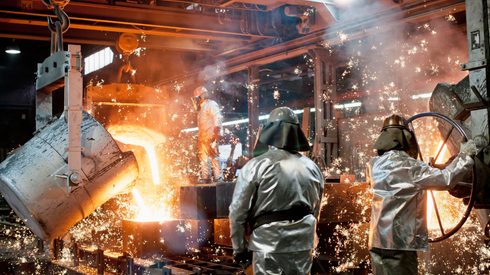“We see a gradual reduction of natural gas-based DRI production starting from 2040, with increasing production based on natural gas with CCUS [carbon capture, utilization and storage] and with increasing hydrogen-based production,” Atherton said, citing the International Energy Agency as his source.
Hydrogen-based DRI production capacity will total about 10 million tonnes per year by 2030, while total output was expected to be 167 million tonnes. In 2019, almost all of the total global output of 116 million tonnes of DRI was produced using natural gas.
“DRI-making equipment which is designed to use natural gas will not be stopped or demolished, it will be modernized to use natural gas but with [the addition of] CCUS,” Atherton told Fastmarkets on the sidelines of the event.
Total global DRI production was expected to reach 269 million tonnes in 2040, of which 174 million tonnes would be from natural gas-based output, 14 million tonnes would use natural gas with CCUS, and 80 million tonnes would be produced using hydrogen.
In 2050, DRI production was expected to be 411 million tonnes, with 213 million tonnes – more than half – being from hydrogen-based processes.
Global DRI output was expected to reach 638 million tonnes by 2070. Of this tonnage, 73.82% (471 million tonnes) would be produced using hydrogen, and only 26.17% (167 million tonnes) would still require the use of natural gas.





